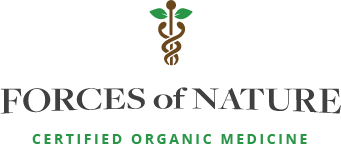By Dr. Peter Klapper Ph.D.
Is It a Cold, the Flu, or RSV?
A Comprehensive Guide to Symptoms and Prevention Strategies
Each cold and flu season, it may be hard to distinguish if the coughing, sneezing, congestion, and difficulty breathing your child is experiencing is your run of the mill cold symptoms or something slightly more serious. So, how can you tell the difference? In this blog post, we will lay out the differences in symptoms between the cold, flu, and RSV so that you can take appropriate measures for your loved ones.
Understanding the Common Cold
More than likely, at some point, your child has experienced symptoms of “the common cold.” The common cold itself is often considered to be a mild respiratory illness caused by various viruses with rhinoviruses being the most common culprits. When afflicted by the common cold symptoms, your child may experience a runny or stuffy nose, sneezing, coughing, and a sore throat. Unlike the flu or RSV, cold symptoms usually develop gradually and typically hang around for about one to two weeks.
Common cold treatments include rest, hydration, over-the-counter cold medications, and a natural approach such as our Cold & Flu for Kids which is easy to use and has a great taste your kids will enjoy.
And remember, when your child has a cold, it's important to practice good hygiene, such as frequent handwashing, to prevent the spread of the virus.
Unraveling the Flu
If your child has onset symptoms of fever, body aches, fatigue, cough, and sore throat, they’re more than likely experiencing flu symptoms. Influenza (the flu) is a more severe respiratory illness caused by influenza viruses, and unlike the common cold, the influenza virus symptoms develop rapidly and can lead to complications such as pneumonia.
A vaccination is available each year as a preventive measure against the flu, but if your child needs flu treatment, antiviral medications may be prescribed to reduce the severity and duration of symptoms if caught early. If you suspect the flu, consult with a healthcare professional promptly.
Navigating RSV Respiratory Syncytial Virus (RSV)
Respiratory syncytial virus (RSV) is highly contagious and poses a unique challenge, especially for vulnerable populations such as infants and older adults. Symptoms typically include coughing, wheezing, difficulty breathing, and a persistent fever. In infants, RSV symptoms may also include irritability, lethargy, a struggle to breathe, and poor feeding.
Due to the risks of severe complications associated with contracting RSV, it’s essential to test for early detection of RSV to allow for timely medical attention. Diagnostic tests, such as molecular tests or rapid antigen tests, can confirm the presence of RSV. Once confirmed, RSV virus treatment includes rest, hydration, and, in some cases, the use of bronchodilators or supplemental oxygen to alleviate symptoms.
Public health guidelines also play a crucial role in preventing the spread of RSV. These guidelines often include recommendations for frequent handwashing, avoiding close contact with sick individuals, and practicing respiratory hygiene by covering coughs and sneezes.
Overlapping Symptoms
RSV, the common cold, and the flu all affect the respiratory system and have many overlapping symptoms such as coughing, congestion, sore throat, fever, fatigue, and body aches making it challenging to understand what ailment has affected your child’s body.
While RSV tends to cause more severe respiratory symptoms, the flu is characterized by a sudden onset with higher fever and body aches. If you are worried that your symptoms are beyond standard cold symptoms, it’s important to consult with your healthcare provider to get a proper diagnosis.
Protecting Yourself and Others
Protecting against the flu and common cold involves getting vaccinated annually, practicing frequent handwashing, and avoiding touching the face to prevent the spread of viruses. Social distancing, staying home when your child is sick, and maintaining a clean environment through regular disinfection also contribute to reducing the risk of infections.
It’s also important to be aware of your symptoms and to act in a timely manner. If you notice your child exhibiting symptoms, don’t hesitate to use your cold and cough relief for kids and cold and cough for adults to keep the whole family safe.
Conclusion
When navigating respiratory illnesses, recognizing the differences between a common cold, the flu, and RSV is essential for prompt and effective management. Yes, home remedies and over-the-counter medications may suffice for mild cases, but seeking medical advice is crucial for severe symptoms, especially in the case of RSV or the flu. Lastly, remember that practicing good hygiene, getting vaccinated, and staying informed about the latest health guidelines are vital steps in protecting yourself and others during respiratory illness seasons.
Navigating Respiratory Illnesses




